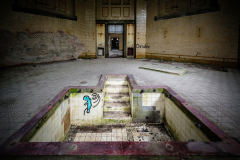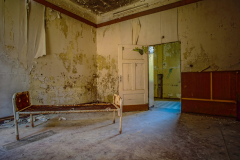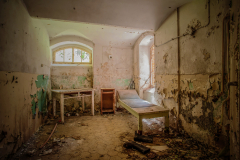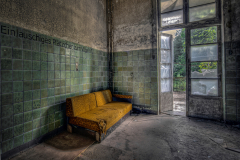The Beelitz Heilstätten hospital complex near Berlin in Germany was originally planned as a tuberculosis sanatorium in 1894. By the turn of the century, a million German people had been struck by TB. Overcrowding and poor sanitation in Berlin, together with malnutrition and a lack of healthcare, contributed to an escalating epidemic. By the time phase two was completed in 1908, Beelitz had a capacity of 1,200 patients and had become self-sufficient. During World War One, the military used Beelitz for the first time and in the Second World War it once again became a military hospital. After 1945, Beelitz had become part of East Germany and was used by Soviet troops. Following the Soviet withdrawal, the site was sold to a private company which then became insolvent. Some of the buildings are in good condition but, particularly on the edge of the 200 hectare site, decay – both natural and man-made – is, predictably, threatening Beelitz.
Walking around Beelitz-Heilstätten today, it was easy to see why a hundred years ago this complex was the pride and joy of hospitals in Germany. Most of the 60 buildings are abandoned, and nature is now undertaking an ad hoc, slow-motion, yet wholly uncompromising demolition – but the size and scale of the architecture of the buildings is stunning.
I am especially interested in the place because it combines the erosion and disassembly of urban surroundings with living nature. We mostly witness the destruction of nature by industrial processes. Beelitz is a rare place where we can witness how, with patience, nature continuously disintegrates man-made structures.























